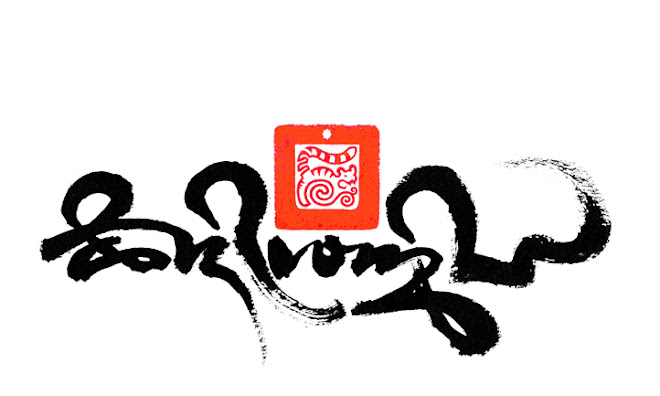Homage to Green Tara.
A delightful line drawing of Green Tara by the master of Tibetan arts Sherab Palden Beru.

The above image shows a 'prayer flag' of Green Tara, who is surrounded by a longer prayer called the '21 Praises of Tara'.
It is one of the first calligraphy pieces created by Tashi when he was a novice monk during the 1980's. The beautiful line drawing of Tara was the initial inspiration to create the prayer flag, placing the image of Tara as the centre piece of this invocation prayer.
It is one of the first calligraphy pieces created by Tashi when he was a novice monk during the 1980's. The beautiful line drawing of Tara was the initial inspiration to create the prayer flag, placing the image of Tara as the centre piece of this invocation prayer.
 |
| © Tashi Mannox 2022 |
The seed syllable Tam of Green Tara, here seated on an open lotus flower.
 |
Short prayer to Green Tara ©Tashi Mannox 2022 |
This short supplication prayer to Tara that can be repeated much like a mantra, normally recited many times over at the end of the 21 praises and before the actual mantra of Tara, shown below.
The prayer translates as:
The prayer translates as:
Jetsun Pagma Drolma take heed,
Protect me from fear and suffering.
'Jetsun Pagma Drolma' is the Tibetan name of green Tara.
The above calligraphy called 'Green Tara Prayer' by Tashi Mannox is also available as beautiful limited addition prints in two sizes, if you are interested in ordering a print you may find more information here.
The Mantra of Green Tara in the Uchen script:
oṃ tāre tuttāre ture svāhā
oṃ tāre tuttāre ture svāhā
This Green Tara mantra is available in many of the different Tibetan script styles as well as Tara's 'tam' syllable on lotus design on the new Tashi Mannox store.








